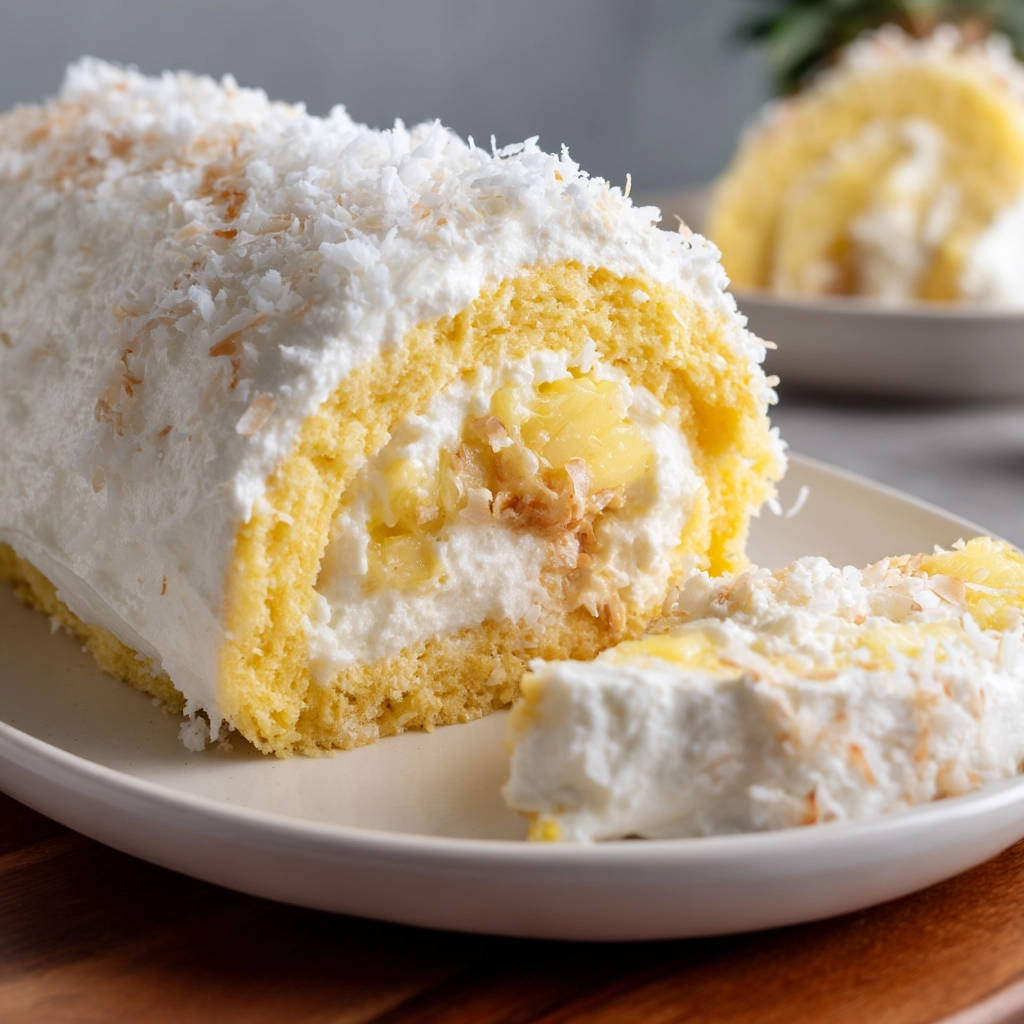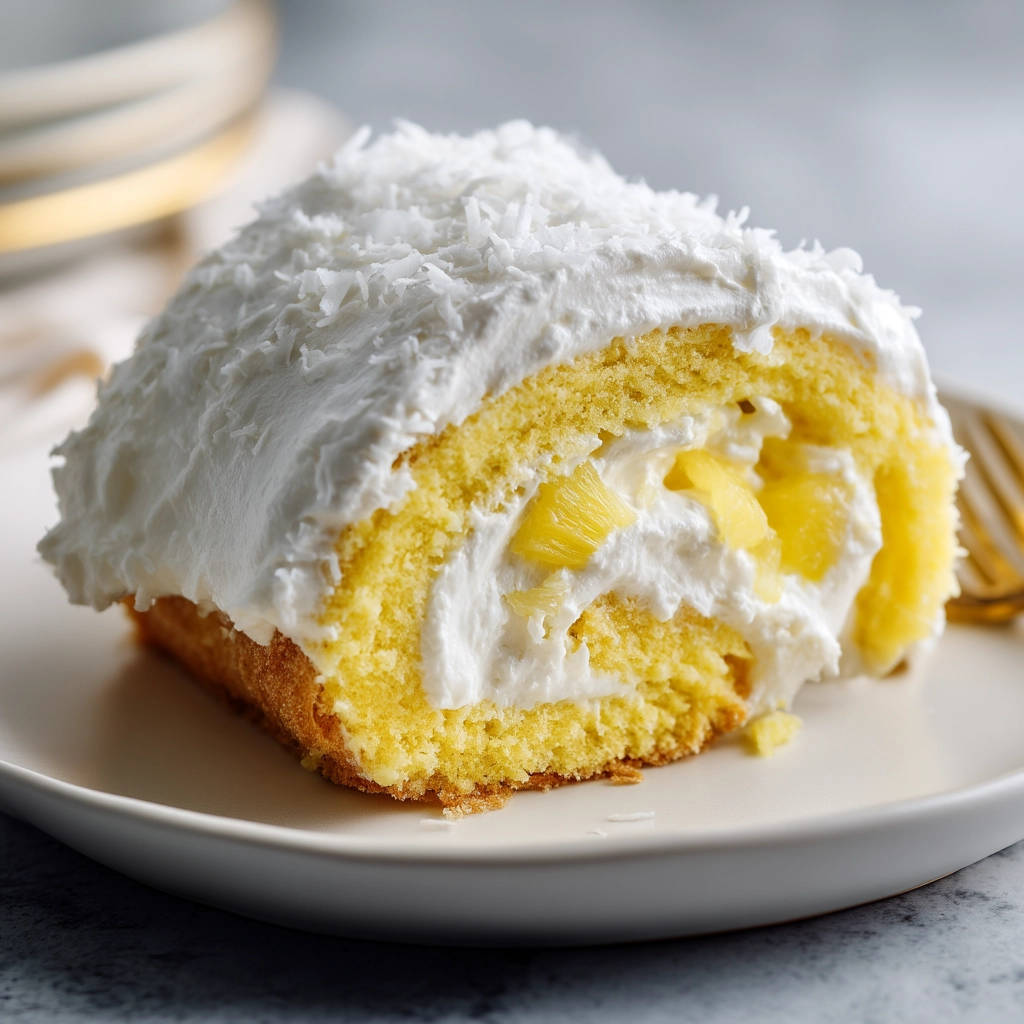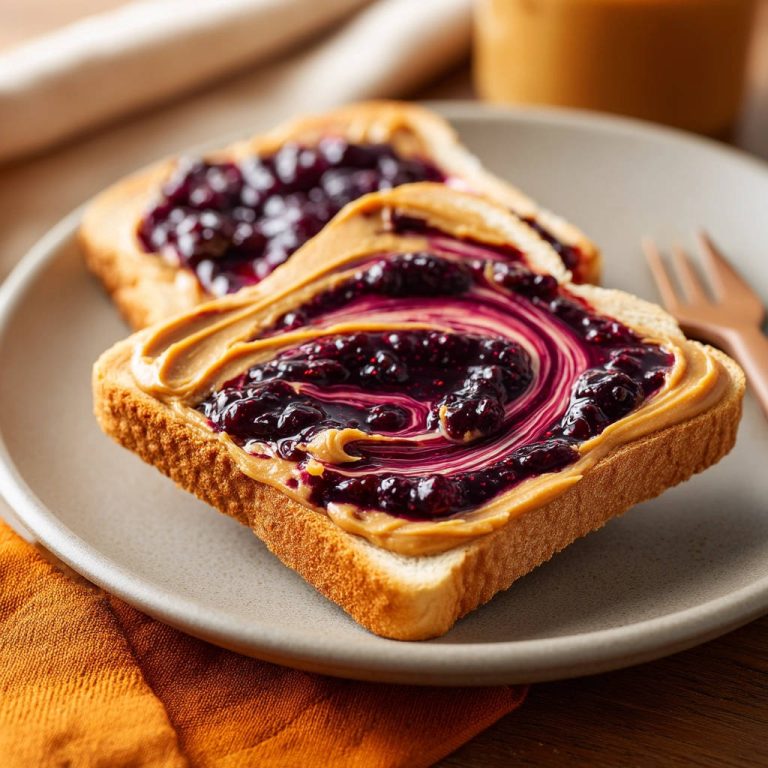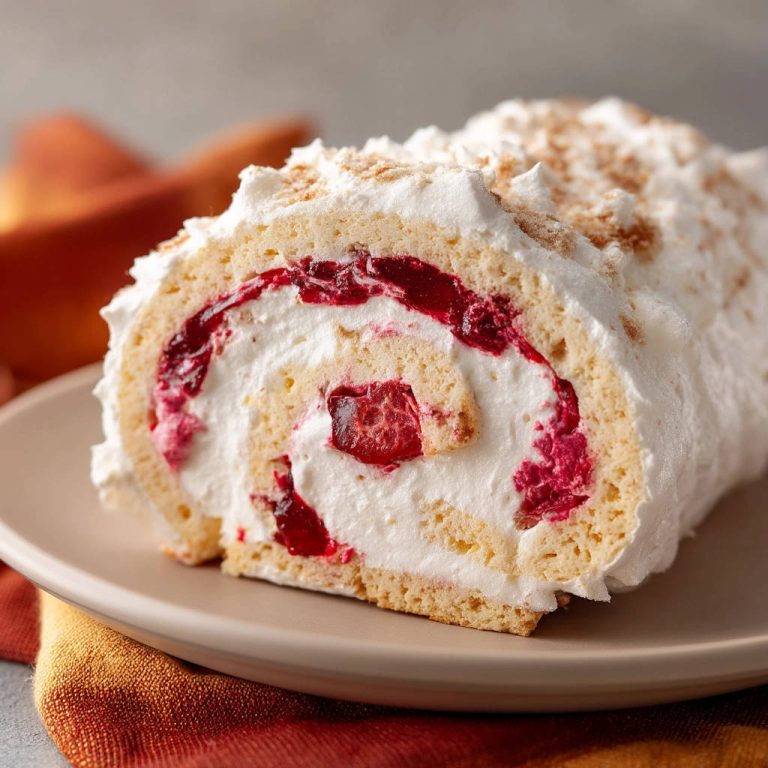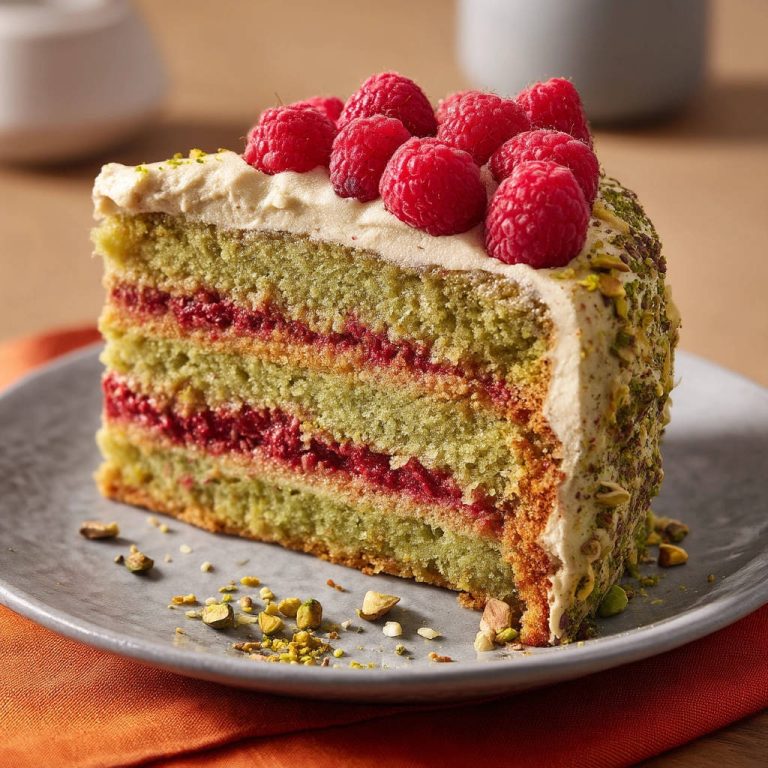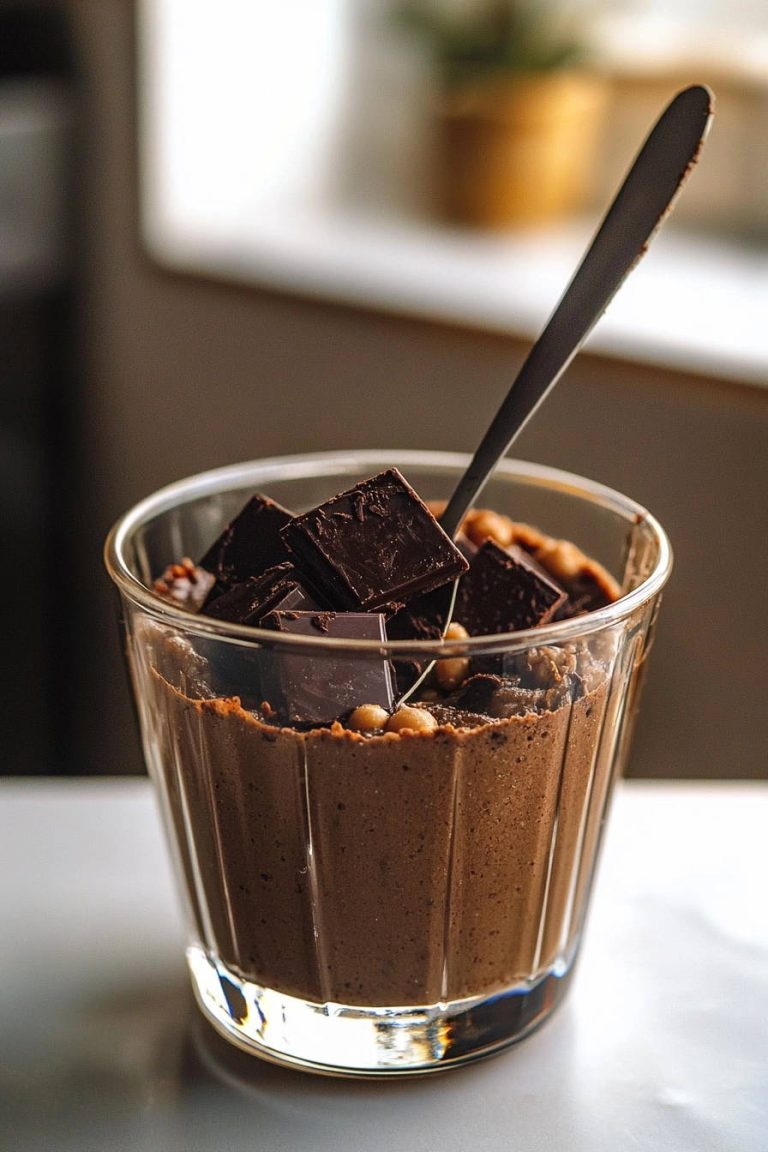Have you ever set out to make a beautiful cake roll, picturing that perfect swirl of cake and filling, only to have it disappointingly crack right before your eyes? It feels like a cruel kitchen trick! For the longest time, the cake roll was my baking nemesis. Every attempt ended with delicious but structurally challenged results. But I’m here to tell you, that frustration is a thing of the past!
After much trial and error, I discovered a simple, yet absolutely game-changing method that guarantees a smooth, pliable cake every single time. This method is key to achieving that gorgeous spiral without any heartbreaking splits. Paired with a luscious tropical pineapple coconut filling and a creamy topping, this Tropical Pineapple Coconut Cake Roll is not just stunning, but bursts with sunshiney flavor.
Get ready to conquer your cake roll fears and create a dessert that looks as amazing as it tastes. This recipe is a guaranteed winner!
Why You’ll Adore This Tropical Pineapple Coconut Cake Roll
Beyond the undeniable visual appeal of a perfectly swirled cake roll, this particular recipe offers a cascade of reasons to fall in love with it:
- Say Goodbye to Cracks: The unique rolling technique while the cake is hot is a game-changer. It trains the cake to hold its shape, ensuring a crack-free masterpiece every time.
- A Tropical Escape: The combination of sweet pineapple and nutty coconut instantly transports your taste buds to a sunny paradise.
- Creamy, Dreamy Filling: The light and tangy cream cheese filling, blended with whipped cream and crushed pineapple, is utterly irresistible.
- Perfect for Any Occasion: Whether it’s a summer potluck, a special birthday, or just because, this cake roll is always a crowd-pleaser.
- Impressively Easy (Once You Know the Trick!): While cake rolls might seem intimidating, this recipe breaks it down and the key step simplifies everything dramatically.
Gathering Your Ingredients for a Tropical Escape
Creating this delightful Tropical Pineapple Coconut Cake Roll requires a few pantry staples and some fresh additions to build those vibrant flavors. Each component plays a vital role in achieving the perfect texture and taste, from the light, airy cake to the rich, creamy filling and the final flourish of coconut topping.
For the cake itself, we’re relying on classic baking ingredients. Separating the eggs is crucial; the yolks provide richness and structure, while beating the whites to stiff peaks introduces necessary air, ensuring a light and flexible cake body that’s essential for rolling. Granulated sugar sweetens and tenderizes, all-purpose flour provides structure, and baking powder gives it a gentle lift. A touch of salt balances the sweetness, and vanilla extract adds warmth. You’ll also need powdered sugar to prepare your rolling surface, preventing the hot cake from sticking.
The heart of this dessert is the filling – a heavenly blend of tangy and sweet. Softened cream cheese forms the creamy base, ensuring a smooth, rich texture. Powdered sugar sweetens it perfectly without adding grittiness, and more vanilla enhances the flavor. Heavy whipping cream is whipped separately and then gently folded in to create a light, airy mousse-like consistency. The star tropical flavors come from well-drained crushed pineapple (draining is key to prevent a soggy filling!) and optional shredded coconut, which adds lovely texture and flavor within the filling.
Finally, the topping is a simple whipped cream frosting finished with toasted coconut for extra flair. More heavy whipping cream is whipped with powdered sugar and vanilla to create a stable, pipeable (or spreadable!) topping. Shredded coconut provides the final touch, and lightly toasting it beforehand amplifies its nutty aroma and adds a satisfying crunch. If you love baked goods featuring coconut, you might also enjoy our toasted coconut chocolate cake or perhaps some crispy coconut pineapple bites for a smaller treat.
Here’s a clear list of everything you’ll need:
- For the Cake:
- 4 large eggs, separated (at room temperature is best!)
- 1/2 cup granulated sugar
- 1/3 cup all-purpose flour
- 1 teaspoon baking powder
- 1/4 teaspoon salt
- 1 teaspoon vanilla extract
- Powdered sugar, for dusting
- For the Filling:
- 8 ounces cream cheese, softened
- 1/4 cup powdered sugar
- 1/2 teaspoon vanilla extract
- 1 cup heavy whipping cream, cold
- 1/2 cup crushed pineapple, well drained
- 1/4 cup shredded coconut (optional, for filling)
- For the Topping:
- 1 cup heavy whipping cream, cold
- 1/4 cup powdered sugar
- 1/2 teaspoon vanilla extract
- 1 cup shredded coconut, toasted lightly if desired
Crafting Your Tropical Pineapple Coconut Cake Roll: Step-by-Step Success
Follow these detailed steps closely, especially the rolling technique, and you’ll be enjoying a beautiful, crack-free Tropical Pineapple Coconut Cake Roll in no time! This process transforms simple ingredients into a stunning dessert.
-
Preparation is Key: Start by preheating your oven to 375°F (190°C). This ensures the oven is at the correct temperature as soon as the batter is ready. Prepare a 10×15 inch jelly roll pan by greasing it generously. Then, line it with parchment paper, leaving a few inches of overhang on the longer sides. This overhang will act as handles later on! Make sure you grease the parchment paper too – this double layer of grease and paper is essential for preventing the delicate cake from sticking as it bakes.
-
Start the Batter: In a large mixing bowl, combine the egg yolks with the granulated sugar. Beat them together using an electric mixer on medium-high speed for several minutes. You’re looking for the mixture to become thick, pale yellow in color, and slightly ribbons when you lift the beater. Stir in the vanilla extract at this stage to infuse the yolk mixture with flavor.
-
Combine Dry Ingredients: In a separate, medium-sized bowl, whisk together the all-purpose flour, baking powder, and salt. This ensures the leavening and seasoning are evenly distributed throughout the dry mix. Gradually add this dry mixture to the egg yolk mixture, mixing on low speed or by hand just until the dry ingredients are incorporated. Be careful not to overmix, as this can develop the gluten too much and lead to a tougher cake, which is less ideal for rolling.
-
Whip the Whites: In a completely clean, dry bowl (any grease or moisture can prevent the whites from whipping properly), beat the separated egg whites. Start on medium speed and gradually increase to high. Continue beating until stiff peaks form – this means that when you lift the beaters, the egg whites stand straight up without drooping. The air whipped into the egg whites is the primary leavening agent for this light sponge.
-
Fold Gently: Now it’s time to combine the two mixtures. Take about half of the whipped egg whites and gently fold them into the cake batter using a spatula. Use an under-and-over motion, rotating the bowl, being careful not to deflate the air you just whipped in. Once mostly combined, fold in the remaining egg whites in the same manner until no white streaks are visible. The batter will be light and airy.
-
Bake and Prepare for Rolling: Carefully spread the batter evenly into the prepared jelly roll pan, smoothing the top with a spatula. Bake in the preheated oven for 12-15 minutes. The cake is done when the edges are lightly golden and the top springs back gently when lightly touched. Be careful not to overbake, as a dry cake will crack!
-
The Crucial Hot Roll: This is the make-or-break step for a crack-free roll! While the cake is still piping hot from the oven, immediately lay a clean kitchen towel or a fresh piece of parchment paper on your counter. Liberally dust this surface with powdered sugar – this prevents the cake from sticking to the towel/parchment. Quickly and carefully invert the hot cake onto the sugared towel or parchment. Gently peel off the parchment paper that was on the bottom of the cake. It should come away easily thanks to the initial greasing.
-
Train the Cake: Starting from one of the short ends of the cake, gently but firmly roll the hot cake up with the towel or sugared parchment paper still inside it. Don’t worry if it feels a little stiff initially; rolling it hot is what makes it flexible. Place the rolled cake, seam-side down, on a wire rack. Let it cool completely in this rolled position. This step trains the cake to maintain the spiral shape as it cools, making the final filling and re-rolling much easier and preventing cracks.
-
Prepare the Tropical Filling: While the cake cools, make the delicious filling. In a medium bowl, beat the softened cream cheese, powdered sugar, and vanilla extract together until the mixture is completely smooth and free of lumps. In a separate bowl, whip the cold heavy cream until stiff peaks form (when you lift the beater, the cream should stand up firmly). Gently fold the whipped cream into the cream cheese mixture using a spatula until just combined. Finally, carefully fold in the well-drained crushed pineapple and the optional shredded coconut. Remember, ensuring the pineapple is well-drained prevents the filling from becoming watery.
-
Fill and Re-roll: Once the cake roll is completely cool (this is important – don’t rush it!), carefully unroll it onto the sugared surface or a fresh piece of parchment paper. Spread the prepared filling evenly over the surface of the cake, leaving about a 1/2-inch border around the edges (this prevents filling from squeezing out when re-rolled). Starting from the same short end you used before, carefully and gently re-roll the cake, this time without the towel or inner parchment.
-
Chill Time: Wrap the filled cake roll tightly in plastic wrap. This helps the filling set and makes the cake easier to slice. Refrigerate for at least 1 hour, but ideally 2-3 hours, or even overnight, to allow the flavors to meld and the cake to firm up.
-
Add the Final Flourish: Just before serving, prepare the topping. In a bowl, whip the remaining cold heavy cream with powdered sugar and vanilla extract until stiff peaks form. Spread this whipped cream frosting evenly over the chilled cake roll. Sprinkle the top generously with shredded coconut. If you’ve lightly toasted the coconut, it adds a wonderful extra layer of flavor and texture.
-
Slice and Serve: Use a sharp knife to slice the cake roll into portions. For clean slices, you can wipe the knife blade with a hot, damp cloth between cuts. Present your beautiful Tropical Pineapple Coconut Cake Roll and enjoy the taste of success!
Tips for Perfect Tropical Pineapple Coconut Cake Roll Every Time
Achieving cake roll perfection is within reach! Here are a few extra tips to ensure your Tropical Pineapple Coconut Cake Roll turns out beautifully, just like the easy chocolate cake roll many bakers love:
- Room Temperature Ingredients: For the cake batter (especially the egg yolks for beating) and the cream cheese for the filling, having them at room temperature helps them combine more smoothly and evenly.
- Drain Pineapple THOROUGHLY: We can’t stress this enough! Excess moisture from the pineapple will make your filling runny and can make the cake soggy. Use a fine-mesh sieve and press gently to extract as much liquid as possible.
- Don’t Overbake the Cake: This is probably the second most common reason for cracks (after not rolling hot). The cake should be just cooked through and spring back when touched. Keep a close eye on it during the last few minutes of baking.
- Be Generous with Powdered Sugar: Don’t be shy when dusting your towel or parchment paper for the initial roll. This dusting creates a non-stick surface that is vital for peeling away the parchment after baking.
- Roll Tightly but Gently: The initial roll needs to be tight enough to create a spiral, but gentle enough not to tear the hot cake. The heat is your friend here, making the cake pliable.
- Allow Complete Cooling: Resist the urge to unroll and fill the cake before it’s totally cool in its rolled state. If it’s still warm, it’s more likely to crack when you unroll it.
- Chill Time is Essential: The refrigeration step isn’t just for show. It allows the cream cheese filling to set up firmly, which supports the cake’s structure and makes for clean, beautiful slices.
What to Serve With Your Tropical Delight
This Tropical Pineapple Coconut Cake Roll is certainly a showstopper all on its own, but you can elevate the experience with simple pairings. A few fresh berries on the side add a lovely tart contrast. For an extra indulgent treat, a small scoop of vanilla bean ice cream or a drizzle of a simple pineapple or mango sauce would be divine. Serving it alongside a refreshing beverage like iced tea or lemonade makes it perfect for a warm day.
Your Tropical Pineapple Coconut Cake Roll Questions Answered
Let’s address some common questions you might have when tackling this delightful dessert:
Why did my cake still crack when I rolled it?
The most common culprits are overbaking the cake (which makes it dry and brittle) or not rolling it immediately while it’s still hot from the oven. Ensure you bake it just until it springs back, and have your sugared towel/parchment ready the moment it comes out.
Can I use fresh pineapple instead of canned?
Canned crushed pineapple is generally recommended for baked goods like this because the canning process breaks down enzymes that can prevent dairy (like the cream cheese and whipped cream) from setting properly. If you use fresh, you would need to cook it first to deactivate these enzymes, and still drain it extremely well.
How far in advance can I make this cake roll?
You can bake and cool the cake roll (in its rolled state) a day ahead. You can also make the filling a day ahead and keep it refrigerated. Assemble and fill the roll the day you plan to serve it, allowing at least 1-2 hours for chilling before frosting the outside. The fully assembled cake roll is best enjoyed within 2-3 days, stored tightly wrapped in the refrigerator.
Can I freeze this cake roll?
Yes, you can! It’s best to freeze it before adding the final whipped cream topping. Wrap the filled, un-frosted roll tightly in plastic wrap, then again in foil. It can be frozen for up to 1 month. Thaw it overnight in the refrigerator before adding the final topping and serving.
Is the coconut in the filling truly optional?
Yes, if you prefer a filling without the texture or flavor of coconut, you can simply omit the 1/4 cup shredded coconut from the filling ingredients. The topping coconut is also optional, though it adds a lovely finish.
Enjoy Your Homemade Tropical Pineapple Coconut Cake Roll!
You’ve done it! With the right technique, especially that crucial hot roll, you’ve created a stunning and delicious Tropical Pineapple Coconut Cake Roll. The vibrant flavors are perfect for brightening any day, and the smooth, crack-free spiral is something to be truly proud of. This recipe is a testament to how simple adjustments can make all the difference in baking.
Give this tropical dessert a try and watch it disappear! Let us know how it turns out in the comments below, and don’t forget to share a photo of your beautiful creation!
Tropical Pineapple Coconut Cake Roll
Ingredients
- For the Cake:
- 4 large eggs, separated
- 1/2 cup granulated sugar
- 1/3 cup all-purpose flour
- 1 teaspoon baking powder
- 1/4 teaspoon salt
- 1 teaspoon vanilla extract
- Powdered sugar, for dusting
- For the Filling:
- 8 ounces cream cheese, softened
- 1/4 cup powdered sugar
- 1/2 teaspoon vanilla extract
- 1 cup heavy whipping cream
- 1/2 cup crushed pineapple, well drained
- 1/4 cup shredded coconut (optional, for filling)
- For the Topping:
- 1 cup heavy whipping cream
- 1/4 cup powdered sugar
- 1/2 teaspoon vanilla extract
- 1 cup shredded coconut, toasted lightly if desired
Directions
- Preheat oven to 375 degrees F (190 degrees C). Grease a 10×15 inch jelly roll pan and line with parchment paper, leaving some overhang on the sides. Grease the parchment paper.
- In a large bowl, beat egg yolks with sugar until thick and pale. Stir in vanilla.
- In a separate bowl, whisk together flour, baking powder, and salt. Gradually add dry ingredients to the egg yolk mixture, mixing until just combined.
- In a clean bowl, beat egg whites until stiff peaks form. Gently fold egg whites into the batter in two additions until no white streaks remain.
- Spread the batter evenly into the prepared pan. Bake for 12-15 minutes, or until the cake springs back when lightly touched.
- This is the key step to prevent cracking: While the cake is still hot from the oven, lay a clean kitchen towel or a fresh piece of parchment paper on your counter and generously dust it with powdered sugar. Immediately invert the hot cake onto the sugared surface. Carefully peel off the parchment paper that was on the bottom of the cake.
- Starting from a short end, gently roll the cake up tightly with the towel or sugared parchment paper inside. Place the rolled cake seam-side down on a wire rack and let it cool completely. This step trains the cake to hold the rolled shape.
- While the cake cools, make the filling. In a medium bowl, beat softened cream cheese, powdered sugar, and vanilla until smooth. In a separate bowl, whip heavy cream until stiff peaks form. Gently fold whipped cream into the cream cheese mixture. Fold in the well-drained crushed pineapple and optional shredded coconut.
- Once the cake is completely cool, carefully unroll it. Spread the filling evenly over the cake, leaving a small border.
- Carefully re-roll the cake (without the towel/parchment).
- Wrap the filled cake roll tightly in plastic wrap and refrigerate for at least 1 hour to set.
- For the topping, whip heavy cream, powdered sugar, and vanilla extract until stiff peaks form. Spread the whipped cream frosting over the chilled cake roll. Sprinkle with shredded coconut.
- Slice and serve.

